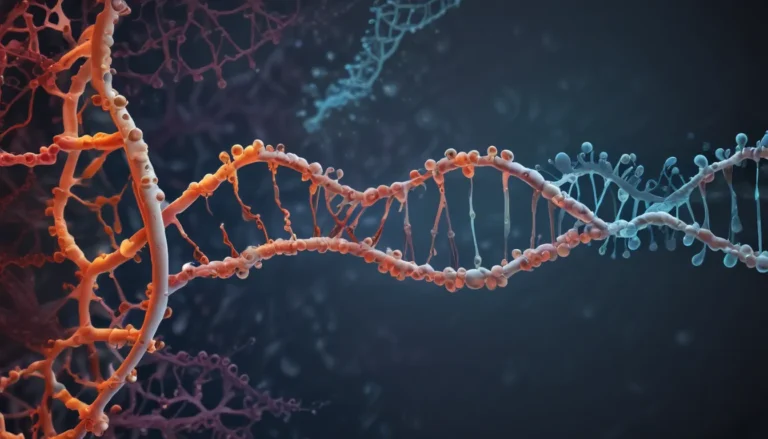A Note About Images: The images used in our articles are for illustration purposes only and may not exactly match the content. They are meant to engage readers, but the text should be relied upon for accurate information.
In today’s ever-evolving world, disease surveillance stands as a pivotal safeguard for public health, monitoring and controlling the spread of diseases on local and global scales. This article delves into 19 astonishing facts about disease surveillance, shedding light on its historical roots, technological advancements, and crucial role in protecting populations from outbreaks and epidemics.
Unraveling the History of Disease Surveillance
Disease Surveillance Through the Ages
- In ancient civilizations like Egypt and Greece, rudimentary systems were in place to track the spread of diseases and their impact on populations.
Establishment of the First System
- Italian physician Francesco Redi set up the first formal disease surveillance system in 1662, aiming to track and contain the bubonic plague in Tuscany, Italy.
The Vital Role of Disease Surveillance in Public Health
Early Detection of Outbreaks
- Continuous monitoring of health data enables disease surveillance systems to identify unusual disease patterns and swiftly respond to outbreaks.
Prevention of Epidemics
- Active surveillance and monitoring allow public health officials to implement preventive measures and interventions, containing the spread of diseases at the community level.
Diversified Data Sources
- Data for disease surveillance is gathered from various channels, including healthcare facilities, laboratories, public health departments, and digital health platforms.
Beyond Infectious Diseases
- Disease surveillance extends beyond infectious diseases to encompass chronic conditions, occupational diseases, environmental health risks, and other health-related issues.
The Technological Revolution in Disease Surveillance
Harnessing Modern Technologies
- Electronic health records, real-time data sharing, and artificial intelligence have revolutionized disease surveillance, enhancing speed and efficiency.
Monitoring Vaccine-Preventable Diseases
- Surveillance systems monitor the incidence of vaccine-preventable diseases to gauge vaccination coverage and identify vulnerable populations.
Global Collaborative Efforts in Disease Surveillance
Establishing Global Networks
- The World Health Organization (WHO) and the Centers for Disease Control and Prevention (CDC) collaborate to create global disease surveillance networks for swift information exchange and coordinated responses.
Assessing Intervention Effectiveness
- Surveillance data aids in evaluating the impact of public health interventions and shaping effective strategies.
Anticipating Emerging Health Threats
Early Warning Systems
- Continuous surveillance enables the prompt identification of emerging diseases, facilitating preemptive measures to curb their spread.
Data-Driven Decision-Making
- Collected data undergoes rigorous analysis and modeling to uncover patterns, forecast trends, and evaluate intervention efficacy.
The Human Element in Disease Surveillance
Essential Role of Epidemiologists
- Epidemiologists are integral to disease surveillance, specializing in the detection, investigation, and control of diseases.
Strengthening Global Health Security
- Disease surveillance assumes a critical role in detecting and responding to potential pandemics that pose threats to global health security.
Looking Towards the Future of Disease Surveillance
Combatting Antimicrobial Resistance
- Surveillance systems track and combat the emergence and spread of antimicrobial resistance to preserve antibiotic effectiveness.
Disaster Response Preparedness
- During natural disasters or humanitarian crises, disease surveillance aids in identifying and managing disease outbreaks within affected populations.
Embracing Mobile Health Technologies
- Mobile apps and devices facilitate real-time data collection, remote monitoring, and reporting of disease cases, bolstering disease surveillance capabilities.
Harnessing Social Media for Surveillance
- Social media platforms are increasingly utilized for sentiment analysis, enabling the detection of early disease outbreaks and vaccine hesitancy signs.
Fostering Collaboration for Preparedness
- Surveillance programs promote collaboration among local, national, and international health agencies, fostering efficient information sharing and best practices.
Embracing the Imperative of Disease Surveillance
In conclusion, disease surveillance’s pivotal role in monitoring and responding to diseases cannot be overstated. From its ancient origins to cutting-edge technologies, it continues to evolve into a powerful tool for global health security. By collecting and analyzing data, disease surveillance systems enable early outbreak detection, facilitate preventive measures, and evaluate intervention efficacy. As public health faces increasing challenges, robust and efficient disease surveillance remains paramount in safeguarding population health.
FAQs: Your Guide to Disease Surveillance
- What is disease surveillance?
-
Disease surveillance involves monitoring and collecting data on disease occurrence to detect and prevent their spread.
-
Why is disease surveillance important?
-
Disease surveillance allows for the identification of outbreaks, understanding disease patterns, and guiding public health interventions.
-
How does disease surveillance work?
-
It involves monitoring data from various sources, analyzing trends, and informing public health strategies.
-
What are the challenges in disease surveillance?
-
Timely data collection, accuracy, privacy concerns, and international cooperation are key challenges in disease surveillance.
-
How does technology impact disease surveillance?
-
Technology revolutionizes disease surveillance through real-time data collection, automated analysis, and rapid response.
-
Who is responsible for disease surveillance?
-
Disease surveillance is a collaborative effort involving government agencies, healthcare professionals, and international organizations.
-
How does disease surveillance contribute to public health?
- Disease surveillance provides critical data for decision-making, identifies high-risk populations, and evaluates intervention effectiveness.
Through ongoing vigilance, research investment, and effective surveillance systems, we can confront the ever-evolving landscape of diseases. Join hands with researchers, healthcare professionals, and policymakers to build a safer, healthier future for all, equipped with the knowledge and tools offered by robust disease surveillance. Together, we can navigate the challenges of public health and strive towards a world where communities thrive in health and well-being.






